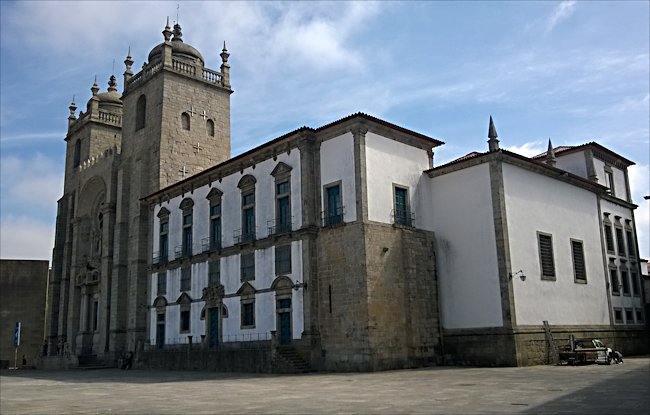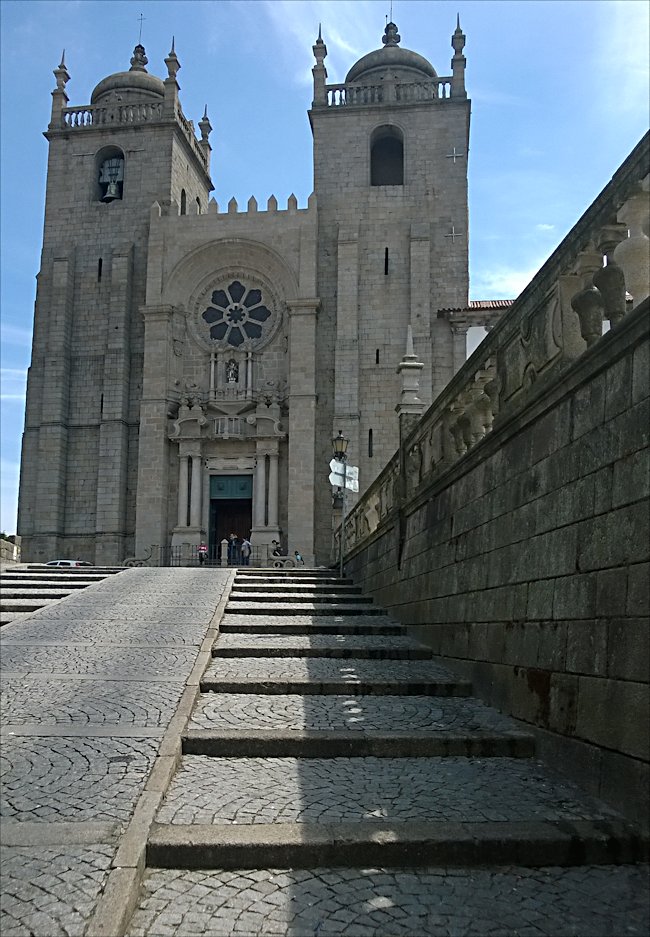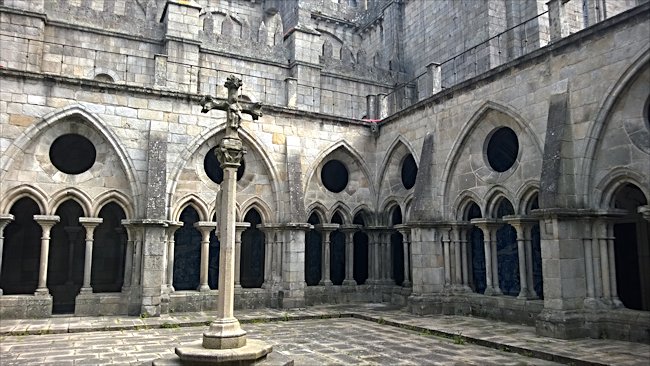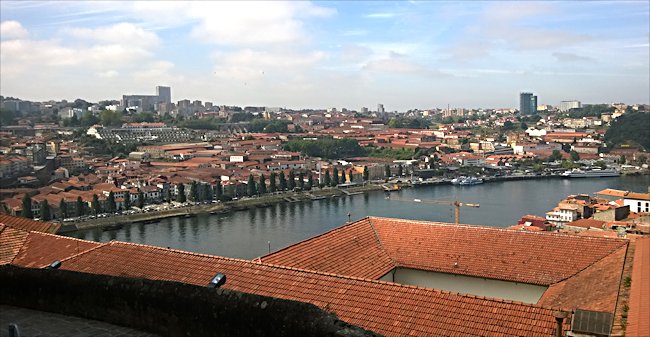Porto's Cathedral - Sé do Porto
I don't normally like walking around churches but I was very impressed with Porto Cathedral, especially the use of decorative pictorial blue and white tiles on many of the walls in the Gothic Cloisters. The rose window above the entrance to the cathedral is an attractive feature and is unusually glazed with plain glass rather than coloured stain glass.

Porto's Cathedral - Sé do Porto
It is located around a large square, on top of the cliff, called Terreiro de Sé. Its location gives it a fortress-like feel and is known as the Cathedral of the Assumption of Our Lady, Sé do Porto or the Sé Catedral. The entrance to the cathedral is flanked by two square towers that are supported externally by to square buttresses. On the top of each tower there is a domed cupola. Entrance to the Cathedral is free but you have to pay to go into the Cloisters and that is really worth the money. They are unusual and attractive. Look for the side entrance door. Many visitors miss it or decide not to go in because of the cost. That is a mistake. It is really worth the ticket price and that is coming from someone who does not like looking around churchs.
You will see tiles being used on the outside walls of buildings all around Porto. This craft and fashion style had its origins during the Moorish invasion. Craftsmen from North Africa came over with the invading army and used their skill to create decorative and pictorial tiles. Most of the blue and white tiles on the outside of the many churches around Porto are used to portray religious images. Not so in the cathedral, which I found very strange. Many of them show pastoral settings; farmers in the fields, gentleman fishing, exotic wild animals running around the countryside and highly fashionably dressed nobility promenading around the country estates.
Most of the blue tiled walls are in the cloisters that are attached to the side of the main cathedral. The entrance door to the cloisters is only small. Many tourists totally miss it or when they see there is an entrance fee walk on by. They are missing out of one of the great attractions of Porto. As soon as you get into the cathedral asked the staff where the door to the cloisters can be found so you don't miss it. View the cathedral afterwards.

The front entrance of the Cathedral of Porto
Porto's Cathedral is one of the city's oldest buildings. It was constructed in the Romanesque style. This means the architects copied the look of the old Roman buildings of Italy and especially those found in Rome. The top of the arches are round and Large pillars are used extensively. This contrasts with the later Gothic designed churches that have pointed arches.
Historians believe there is been church at this location since the 400AD. The present cathedral was built on top of the older buildings around 1110 A.D. Its construction was ordered by Bishop Hugo. It took over 100 years to complete. The entrance to the cathedral is flanked by two large bell towers. The crenellations above the entrance door give the impression that the cathedral is fortified. The decoration around the door is a later addition. It has a baroque style surround.
Over the years the church has seen many modifications. The cloisters were built later during the Gothic period of architecture. When standing in the centre of the cloister look at the Arches that surround you. You will notice they all have pointed tops.

The arches are pointed in the Cathedral Cloisters not round; they are gothic not Romanesque
With your back to the cathedral door look over to the left hand side of the square. You will see a wall with a view over to the river. It is worth going over to have a look. You are very high up and you get a commanding view of the North and South side of the river Douro, especially the tiled long thin warehouse roofs of port wine manufacturing companies in the "New Town" Vila Nova de Gaia. Those are the buildings behind the long line of evenly spaced green trees.

The view from the Porto Cathdral Square of the Port Wine Warehouses.
Travel Books


Tweet